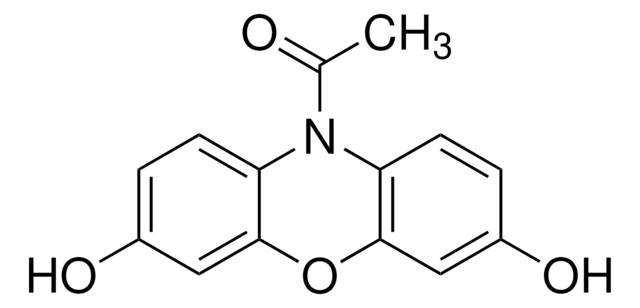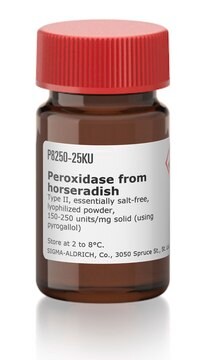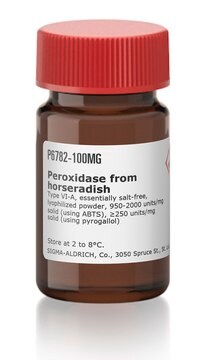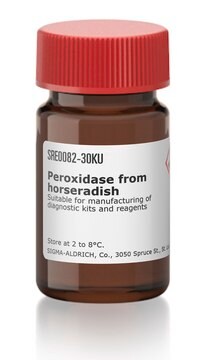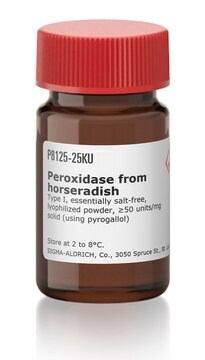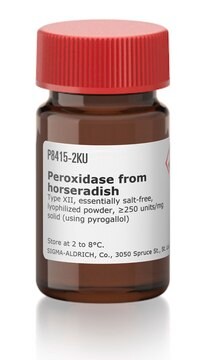10108090001
Roche
Peroxidase (POD)
grade I, from horseradish
Synonym(e):
POD, peroxidase
About This Item
Empfohlene Produkte
Biologische Quelle
horseradish
Qualitätsniveau
Form
lyophilized (salt-free)
Spezifische Aktivität
≥250 units/mg protein (At 25 °C with guaiacol and H2O2 as the substrates.)
250 U/mg
Verpackung
pkg of 25,000 U
Hersteller/Markenname
Roche
Optimaler pH-Wert
6.0-6.5
Versandbedingung
wet ice
Lagertemp.
2-8°C
Allgemeine Beschreibung
Anwendung
Biochem./physiol. Wirkung
Qualität
Purity number: approximately 3.0 (A403/A275)
Angaben zur Herstellung
Working solution: PBS (phosphate buffered saline) or water (starting concentration 20 mg/ml).
Rekonstituierung
Sonstige Hinweise
Signalwort
Danger
H-Sätze
Gefahreneinstufungen
Resp. Sens. 1 - Skin Sens. 1
Lagerklassenschlüssel
11 - Combustible Solids
WGK
WGK 1
Flammpunkt (°F)
Not applicable
Flammpunkt (°C)
Not applicable
Analysenzertifikate (COA)
Suchen Sie nach Analysenzertifikate (COA), indem Sie die Lot-/Chargennummer des Produkts eingeben. Lot- und Chargennummern sind auf dem Produktetikett hinter den Wörtern ‘Lot’ oder ‘Batch’ (Lot oder Charge) zu finden.
Besitzen Sie dieses Produkt bereits?
In der Dokumentenbibliothek finden Sie die Dokumentation zu den Produkten, die Sie kürzlich erworben haben.
Kunden haben sich ebenfalls angesehen
Unser Team von Wissenschaftlern verfügt über Erfahrung in allen Forschungsbereichen einschließlich Life Science, Materialwissenschaften, chemischer Synthese, Chromatographie, Analytik und vielen mehr..
Setzen Sie sich mit dem technischen Dienst in Verbindung.


